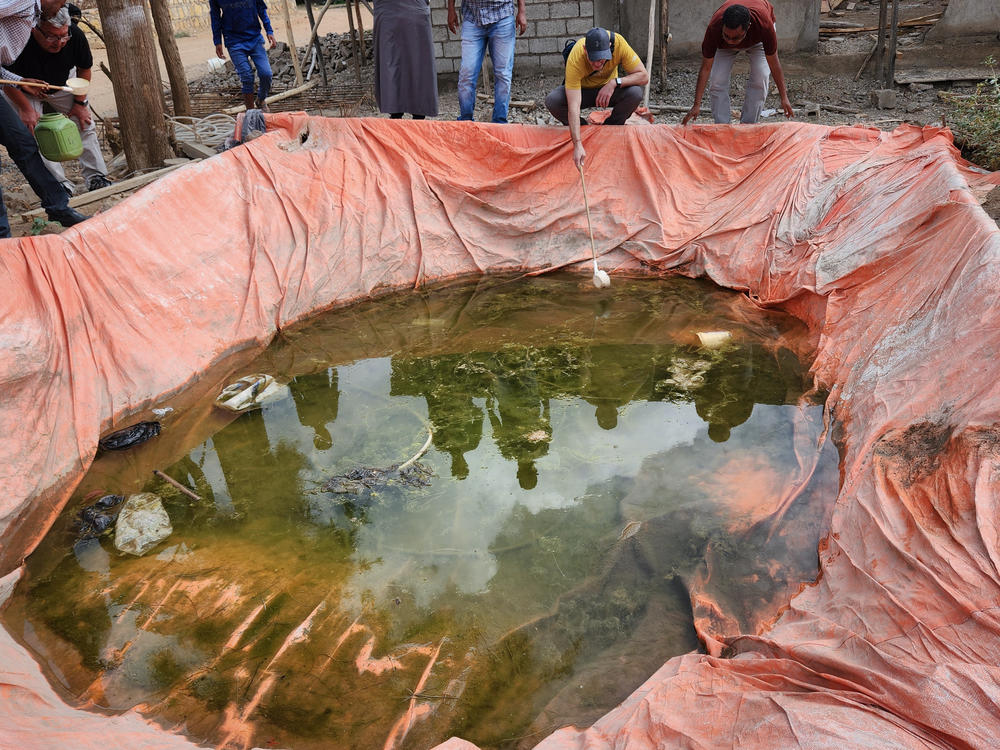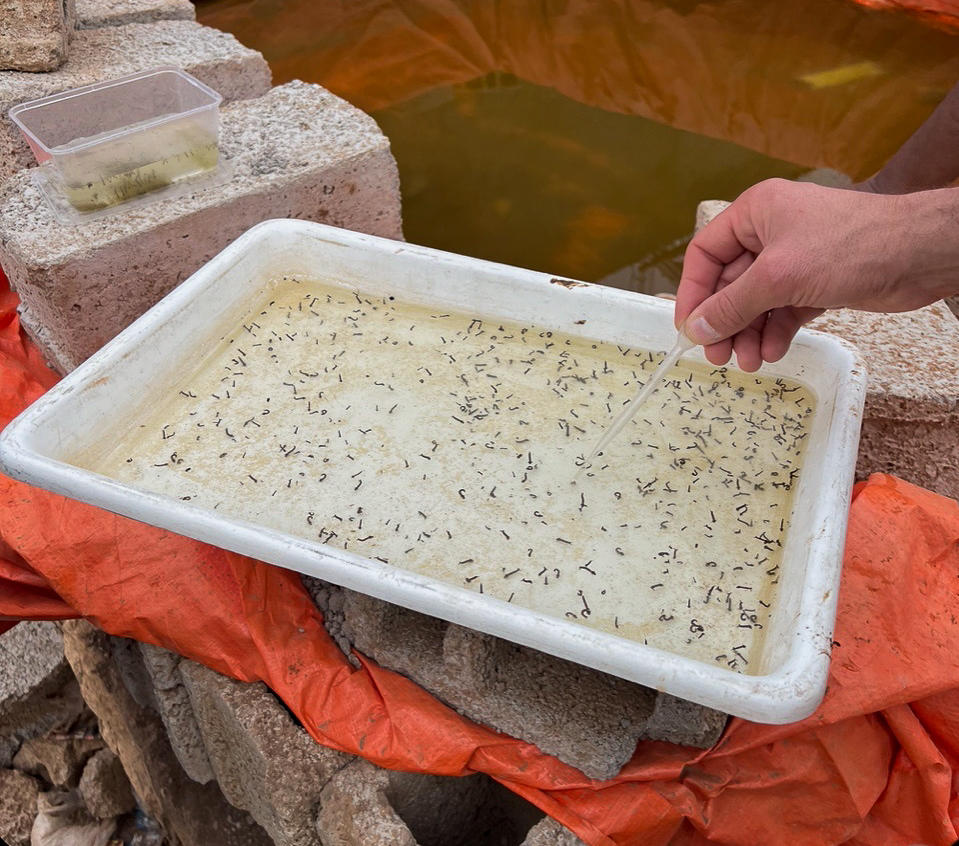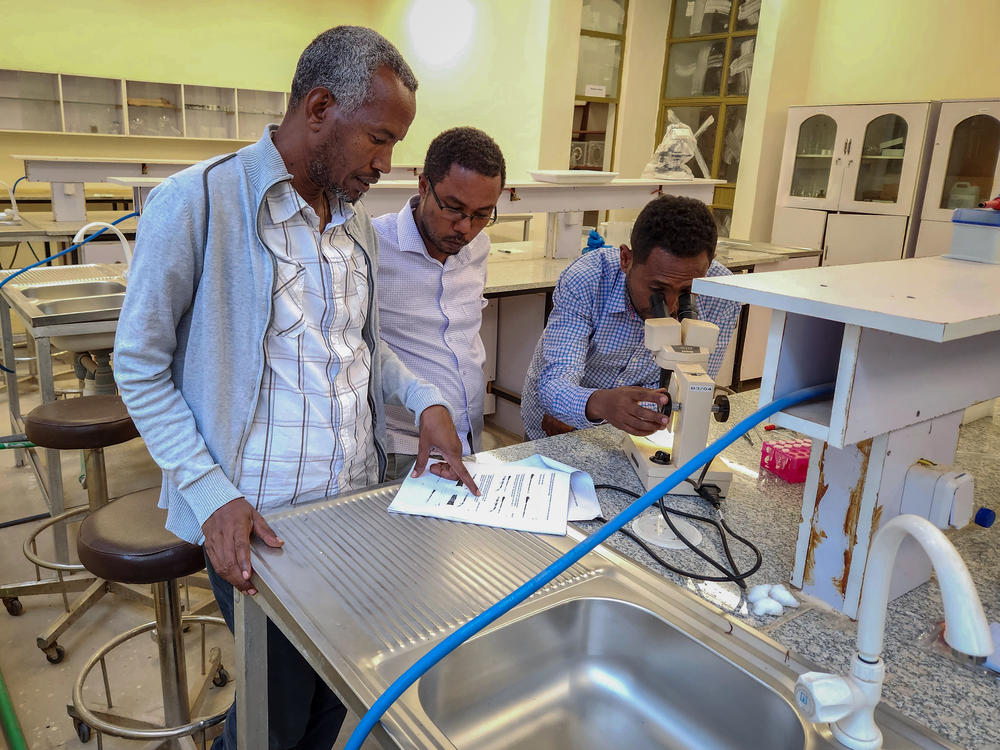Section Branding
Header Content
Big city mosquitoes are a big problem — and now a big target
Primary Content
About a decade ago, a new kind of mosquito began showing up in African cities. Native to Asia, Anopheles stephensi prefers crowded urban environments over rural ones. That spelled trouble: These mosquitoes transmit malaria.
It's especially bad news for Africa where more than 93% of the world's quarter-billion malaria cases were identified last year.
"The challenge relates to a new species invading an area in which most people have never been exposed to malaria," says Gonzalo Vazquez-Prokopec, an environmental scientist at Emory University. "And that could lead to severe outbreaks and transmission — you know, epidemic malaria."
New research by Vazquez-Prokopec and his collaborators, published in Lancet Planetary Health, may offer some hope.
The researchers found that a surge in construction could be giving A. stephensi the foothold it needs to survive year-round, which, in turn, suggests a number of interventions that might dramatically knock down the insects' numbers.
An oasis for mosquitoes
Jigjiga, a city of some 750,000 in Ethiopia, is a good example of Africa's rapidly urbanizing communities. In just a few short years, it's been transformed. "I came here [in] 2007," says Solomon Yared, a medical entomologist at Jigjiga University. "It was [a] very small town. But now, many people [are] coming to Jigjiga. Construction is booming."
Those construction sites seem to be giving the mosquitoes a kind of foothold. The city has exploded not just with people but also with A. stephensi. "The density of the mosquito is increasing," says Yared. And it's "associated with the urbanization, the building [of] houses."
Most of the research on this mosquito in Jigjiga has been conducted during the rainy season when there is plenty of standing water for the mosquitoes to lay their eggs. But Vazquez-Prokopec and his colleagues wanted to know what happens to the insects during the dry season.
"Imagine now an area that has no surface water, no rivers, no running water on the streets," he says. In that dry landscape, how do the mosquitoes manage to both survive and spawn the next generation of malaria vectors?
This past March, during the peak of the dry season, the researchers went house to house in Jigjiga, asking residents if they could look for any standing water. Not everyone agreed, but 135 households did.
They looked in tires sitting around outside. "All of them were dry," says Vazquez-Prokopec. They peered into buckets, but they didn't have mosquitoes either.
Cement cisterns that store potable water had some mosquito larvae.
But the real jackpot came when they lowered their sampling nets into the large pits of standing water widely used for construction. This water is used for mixing cement to build houses; the researchers discovered that the pits act like mosquito nurseries. With all the ongoing construction in Jigjiga, A. stephensi has enough habitat during the dry season to survive until the rains return and its life gets easier. That's when the mosquito population surges and becomes much harder to control.
Vazquez-Prokopec says the dry season — when mosquito numbers plummet — could be the perfect time to intervene, and their dependence on the construction pits suggests a way to target them. Vazquez-Prokopec says he imagines introducing chemicals into the water pits that kill the mosquito larvae but are otherwise safe. Another approach he suggests is adding fish that eat mosquito larvae to the pits.
You could also pipe the water in fresh for construction each day rather than letting it stagnate, says Marianne Sinka, an entomologist and ecologist at the University of Oxford who wasn't involved in the research.
All of these would be welcome remedies, Sinka says, given the challenges of spraying insecticides in urban areas and the fact that "people don't typically use bed nets" there. And it's proof, she says, of how crucial it is to understand the behavior of the particular mosquito you're fighting — because that knowledge leads to precision combat.
If one or more of these solutions works to reduce the number of A. stephensi in Jigjiga, says Vazquez-Prokopec, it could mean a lower risk of malaria for people in cities across Africa.
Creating a 'time machine' to track mosquitos
The researchers stumbled upon a shortcut for determining where and how to best apply their interventions.
Vazquez-Prokopec plotted all of the construction pits on a map. When he overlaid satellite imagery, the pits leaped out. "They're orange [from the tarps used to line them] and they have water. And in a dry place with no water, those two things stand out very clearly and very visibly."
The satellite images provided a shortcut to locating potential mosquito breeding grounds. Because there are few trees or high-rise buildings in Jigjiga, the researchers were able to search for that same wet, orange signal in satellite imagery elsewhere in the city. Along a 1,300-foot swath, they detected 192 construction pits in 2021.
When they looked at historic satellite imagery along that same swath from 2016 and 2017, there were only 84 and 65 pits, respectively. The mapping, in other words, served as a kind of time machine, revealing the rapid pace of growth in both development and mosquito habitat.
Over the years, most of the pits were concentrated in the city's center rather than along the periphery. "So we have rings of development," says Vazquez-Prokopec. "This allows you to say maybe we don't have to go randomly around the city" to find the pits and introduce interventions.
Using this targeted approach, if enough of the larvae can be killed or gobbled up, "we might be able to disrupt the entire population because [the mosquito is] not found anywhere else" during the dry season, he says. "So our research provides a glimmer of hope that maybe we have a chance at containing this mosquito."
Copyright 2023 NPR. To see more, visit https://www.npr.org.



